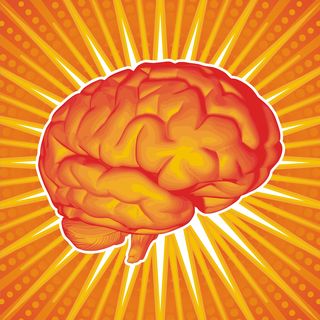Well my doctor did nothing to get me dancing, swimming or gardening. He did however have my physical therapists work on my walking. The incredibly dangerous activity of walking that your therapists push you to do. In 2016, for example, the death rate due to falls among 75- to 79-year-olds was 42 per 100,000. Among those 95 and older, the rate was 591 per 100,000.
4 Daily Habits That Could Stop Your Brain From Shrinking
Older adults who walk, dance, swim, or garden tend to have less brain shrinkage.
Posted Mar 06, 2020
The cohort for this study included 1,557 people with an average age of 75. This research is scheduled to be presented at the American Academy of Neurology's 72nd Annual Meeting in Toronto next month.
As we age, our brains tend to shrink. After age 40, previous research has shown that human brain weight typically decreases by about 5 percent each decade. After age 70, brain shrinkage typically occurs at an even faster rate (Scahill et al., 2003).

Source: LANBO/Shutterstock
"Older people who regularly walk, garden, swim, or dance have bigger brains than their inactive peers," according to a recent press release from the AAN about this research.
In addition to walking, dancing, swimming, or gardening, the recent findings from Columbia suggest that any type of physical activity (done consistently throughout the week) may significantly slow brain-volume loss by the time someone is in his or her mid-seventies. (See "This Is Why Aerobic Exercise Is 'Miracle-Gro' for Your Brain")
According to current physical activity guidelines, adults should aim for at least 150 minutes of moderate-intensity physical activity per week or 75 minutes of vigorous-intensity exercise per week.
Each person in Columbia University's recent MRI study self-reported the amount of time and energy he or she spent being physically active every week. Then, the researchers divided study participants into three groups based on how many minutes of physical activity each person did at varying degrees of intensity.
Here are the three groups:
- Those who were inactive
- Those who were somewhat active, meaning that each week they did at least 150 minutes of low-intensity physical activity, 90 minutes of moderate physical activity, or 60 minutes of vigorous-intensity physical activity
- Those who were most active, meaning that each week they did at least seven hours of low-intensity physical activity, four hours of moderate-intensity physical activity, or two hours of vigorous-intensity physical activity
More specifically, the brain scans showed that "the average brain size for those who were inactive was 871 cubic centimeters compared to 883 cubic centimeters for those who were most active." According to the researchers, this 1.4 percent difference in brain volume is equivalent to nearly four years of brain aging.
"These results are exciting, as they suggest that people may potentially prevent brain shrinking and the effects of aging on the brain simply by becoming more active," Yian Gu of the Columbia University Department of Neurology, who led this research, said in the news release.
"Recent studies have shown that as people age, physical activity may reduce the risk of cognitive decline and dementia," she added. "Our study used brain scans to measure the brain volumes of a diverse group of people and found that those who engaged in the top third-highest level of physical activity had a brain volume the equivalent of four years younger in brain aging than people who were at the bottom third activity level."
One noteworthy limitation of this study is that self-reported surveys on physical activity levels rely on each participant giving accurate information, which is not always the case. Also, this research is correlative; it identifies a correlation (not a causal link) between higher amounts of exercise and less brain shrinkage as people age.
"Our results add to the evidence that more physical activity is linked to larger brain volume in older people," Gu concluded. "It also builds on evidence that moving your body more often throughout one's life may protect against loss of brain volume."
DISCLAIMER: Please use common sense and consult with your doctor before engaging in any new type of high-intensity physical activity—especially if you haven't done any moderate-to-vigorous physical activity recently.
No comments:
Post a Comment